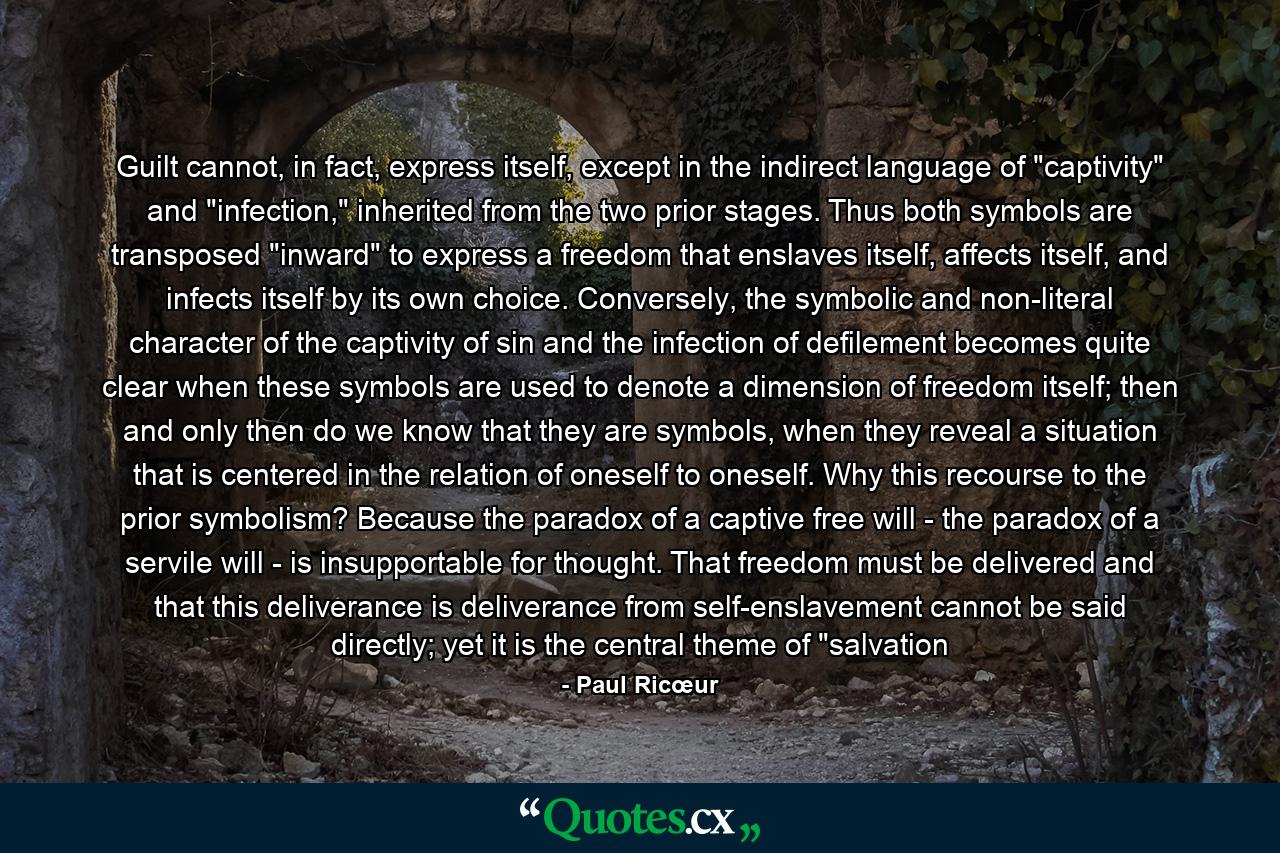Guilt cannot, in fact, express itself, except in the indirect language of “captivity” and “infection,” inherited from the two prior stages. Thus both symbols are transposed “inward” to express a freedom that enslaves itself, affects itself, and infects itself by its own choice. Conversely, the symbolic and non-literal character of the captivity of sin and the infection of defilement becomes quite clear when these symbols are used to denote a dimension of freedom itself; then and only then do we know that they are symbols, when they reveal a situation that is centered in the relation of oneself to oneself. Why this recourse to the prior symbolism? Because the paradox of a captive free will – the paradox of a servile will – is insupportable for thought. That freedom must be delivered and that this deliverance is deliverance from self-enslavement cannot be said directly; yet it is the central theme of “salvation
